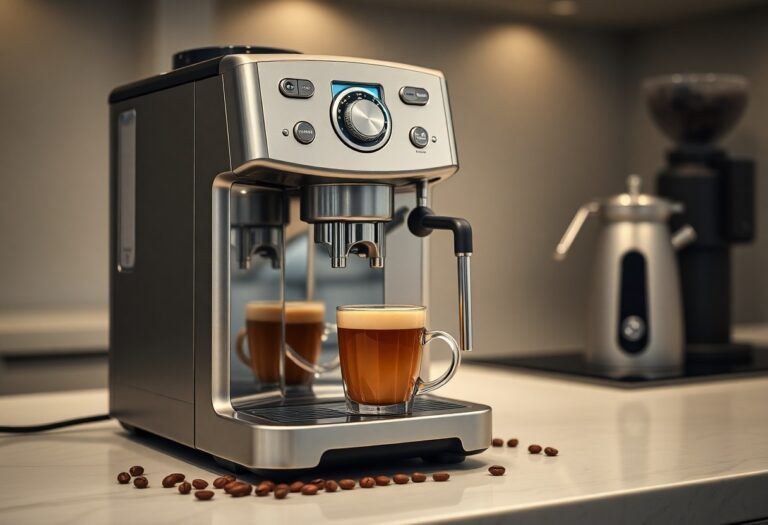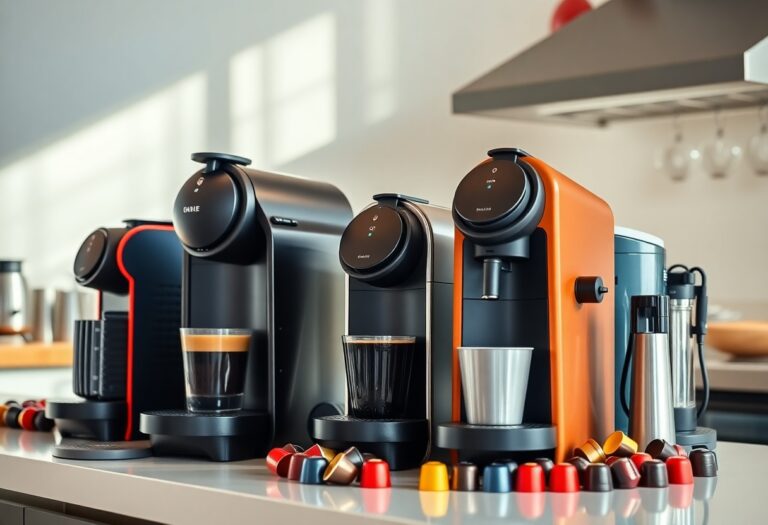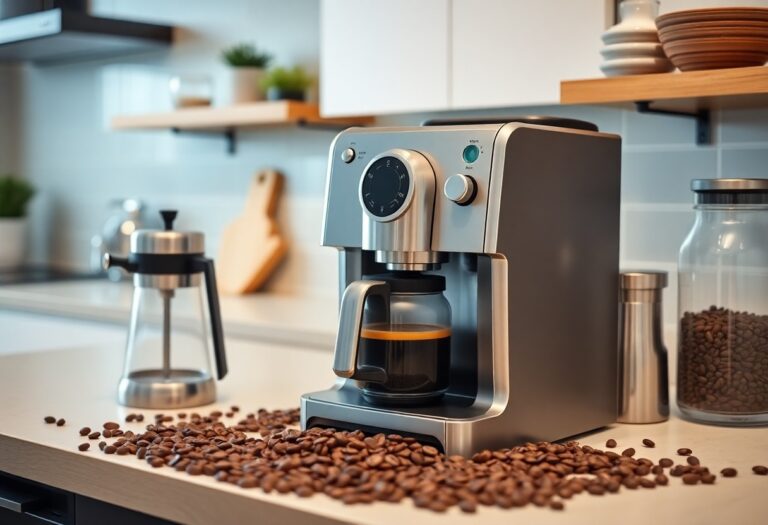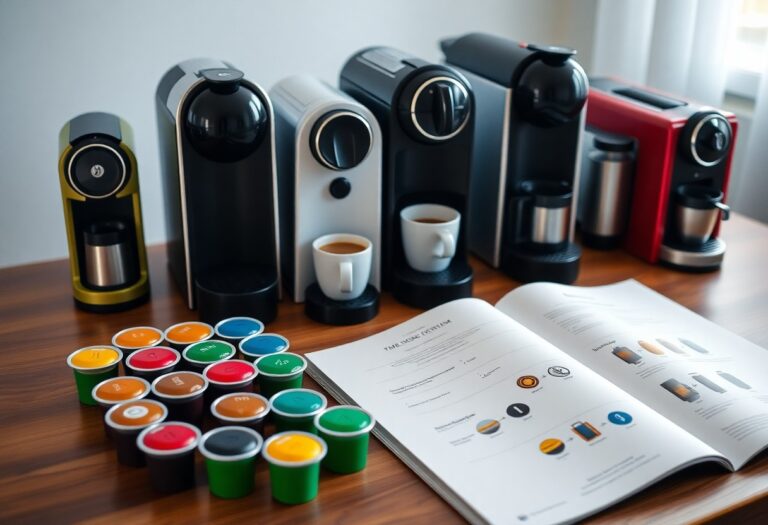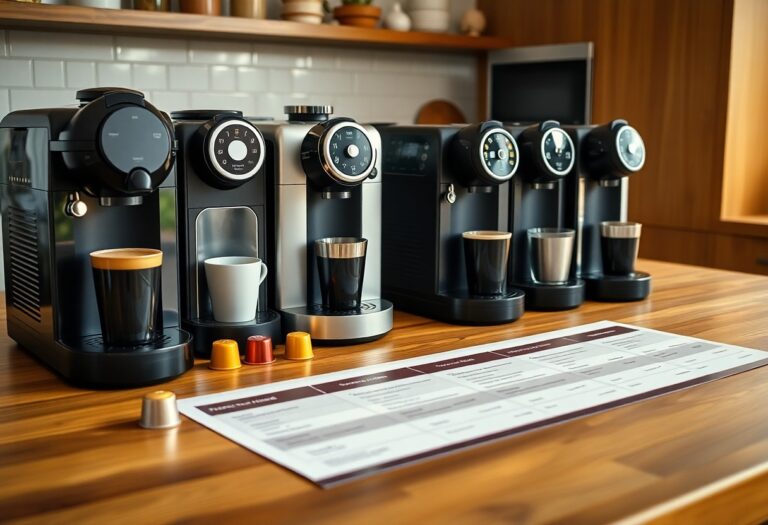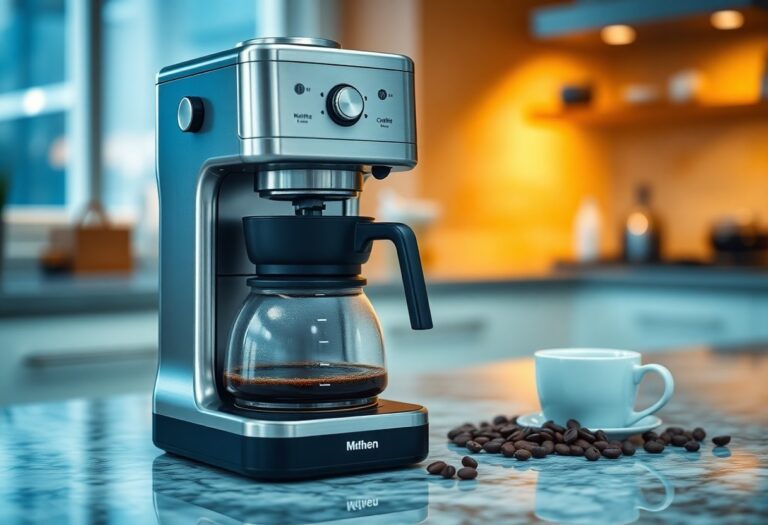What is a Manual Coffee Machine – Hands-On Brewing
The Allure of Manual Coffee Machines
For many coffee aficionados, the allure of manual coffee machines lies in their ability to transform the brewing process into an art form. These machines require your full attention, allowing you to control every variable from water temperature to brewing time. The tactile feedback and active engagement offer a satisfying connection to your coffee, something that automatic machines lack. Users often find that the results are not just about taste; there’s something deeply rewarding about crafting the perfect cup yourself. Curious about the experiences of other coffee lovers? Check out the discussion on Are manual espresso machines any good? : r/Coffee to see firsthand insights.
Key Takeaways:
- A manual coffee machine allows users to have complete control over the brewing process, tailoring each cup to individual preferences.
- Hands-on brewing techniques, such as using a French press or pour-over, enhance the flavor extraction and overall coffee experience.
- Manual machines often require more time and skill, making the brewing process a more engaging and rewarding experience.
- Users can experiment with various grind sizes, water temperatures, and brewing times, leading to a deeper understanding of coffee’s nuances.
- Investing in a high-quality manual coffee machine can improve brewing consistency and ultimately elevate coffee enjoyment.
Inside the Mechanics: How Manual Machines Brew
Understanding the mechanics behind manual coffee machines brings you closer to mastering the art of brewing. Each machine operates based on the key principles of pressure and temperature, offering a blend of science and artistry. You engage with the process directly, adjusting variables like grind size and brewing time to customize your perfect cup. The beauty of manual machines grants you the freedom to explore different flavor profiles and achieve a level of quality unattainable by automated systems.
The Role of Pressure in Extraction
Pressure significantly influences the extraction process, affecting flavor and aroma in your coffee. With manual machines, you actively control this pressure, which can range from 0 to 9 bars in most espresso machines. A higher pressure tends to yield a richer and more robust flavor, while lower pressure can result in a milder taste. You’ll find that manipulating this variable allows you to enhance specific notes in the coffee beans.
Understanding Temperature Control for Flavor
Temperature plays a vital role in coffee brewing, as different flavors emerge at varying heat levels. A temperature range of 195°F to 205°F is generally ideal for coffee extraction. If you brew too cool, you risk under-extraction, leaving your coffee weak and sour. Conversely, brewing too hot can lead to over-extraction, turning your drink bitter. Adjusting the temperature gives you full control over flavor nuances, enabling you to discover the unique characteristics of each coffee variety.
| Temperature Range (°F) | Expected Flavor Profile |
| 195 – 200 | A well-balanced cup, highlighting sweetness and acidity |
| 201 – 205 | Robust flavors, potential bitterness if over-extracted |
| Below 195 | Frequent under-extraction, resulting in sour notes |
With proper temperature control, you can fine-tune your brewing process. It allows you to extract the full potential of your coffee beans, unveiling complex flavors and lingering aromas that enhance your drinking experience. Aiming for the right temperature not only brings out the best characteristics of the coffee but also helps you navigate the vast world of tastes, guiding your exploration toward personal preferences.
| Technique | Impact on Flavor |
| Preheated Water | Maintains a stable brewing temperature |
| Using a Thermometer | Ensures precision in temperature for consistent results |
| Adjusting Brew Time | Allows for adaptation to slight temperature variations |

Mastering the Art: Techniques for Hands-On Brewing
Achieving a perfect cup of coffee through manual brewing requires both finesse and technique. Building your skills in areas such as grind size, ratios, and brewing methods will elevate your coffee experience. Each element is interlinked, influencing flavor extraction and overall quality. Focus on these techniques, and you’ll soon find yourself brewing like a seasoned barista.
Grind Size and Consistency: The Foundation of Flavor
The grind size of your coffee beans directly affects the extraction process and the overall flavor profile. Finer grinds release flavors quickly, ideal for methods like espresso, whereas coarser grinds work best for methods like French press. Consistency in grind size ensures that every coffee ground interacts with water similarly, producing a more balanced and robust flavor. Invest in a good burr grinder to achieve uniformity in your grind and enhance your brewing experience.
Brewing Ratios: Finding Your Perfect Cup
Finding the right brewing ratio can significantly influence the strength and flavor of your coffee. A common starting point is the Golden Ratio, which suggests using 1:15 (one part coffee to fifteen parts water). Experimenting within this range allows you to adjust strength and taste to suit your preferences. Keep notes of each adjustment to refine your method until you discover your ideal brew.
For example, if you enjoy a richer flavor, a 1:12 ratio increases the coffee intensity, while a 1:18 ratio results in a milder taste. Adjusting your ratio is not just about strength; it also modifies how flavors express themselves. A ratio that’s off could bury subtle notes in your coffee, turning a complex brew into a flat cup. Keep track of your measurements for future reference to ensure consistency in your brewing process.
The Flavor Revolution: Why Manual Brewing Elevates Coffee
Manual brewing techniques introduce an unparalleled layer of complexity and nuance to your cup of coffee. The process allows you to control every variable, from grind size to water temperature, ultimately crafting a beverage that resonates with your personal taste preferences. By engaging more actively in brewing, you unlock flavors often lost in automatic machines, where limitations exist in customization and precision.
The Impact of Freshness on Taste
Freshly ground coffee beans are vital for maximizing flavor. The moment beans are ground, they begin to oxidize, losing crucial oils and aromas critical to a vibrant cup. With manual brewing, you can grind your beans just before brewing, ensuring that the rich notes and nuances remain intact. The result is a fresher, more aromatic brew that truly highlights the origin of your coffee.
Comparing Flavor Profiles: Manual vs. Automatic Brewing
The difference in flavor profiles between manual and automatic brewing is striking. While machines often produce a consistent cup, manual methods allow for greater experimentation, enabling you to highlight specific flavor notes. A simple adjustment in grind size or brewing time can significantly impact acidity, body, and aromatic complexity, ultimately giving you a unique tasting experience each time.
Flavor Quality Comparison
| Parameter | Manual Brewing |
| Flavor Nuance | More pronounced, highlighting bean origin |
| Consistency | Varies, allowing for personal experimentation |
| Control | High, with adjustable variables |
| Brewing Time | Flexible, customizable to your taste |
Manual brewing encourages you to explore diverse flavor profiles through deliberate adjustments to various elements during the process. In contrast, automatic machines offer predictability but lack the depth of flavor manipulation you experience with manual methods. By experimenting with your manual setup, you can uncover hidden notes and unique qualities that elevate your coffee-drinking experience to new heights.
Unique Tasting Experience
| Feature | Manual Brewing |
| Personalization | Highly tailored to individual preferences |
| Adaptability | Easy to modify brewing techniques |
| Flavor Experimentation | Welcomes a broad range of styles |

Cultivating Tradition: The Community of Manual Brewing Enthusiasts
The world of manual brewing is not just a solitary pursuit; it’s a vibrant community built on a shared passion. Enthusiasts gather in various forums and social media groups, exchanging tips and personal brews while celebrating the unique flavors that emerge from their machines. This camaraderie is a testament to the craft, where discussions can often lead to valuable insights into techniques and equipment. For an in-depth comparison of the two brewing methods, you may explore The Ultimate Coffee Experience: Manual vs. Automatic….
Social Gatherings and Hands-On Workshops
Local coffee shops and specialty stores often host social gatherings and hands-on workshops, bringing manual brewing enthusiasts together to refine their craft. During these events, you can test out different machines, share your personal techniques, and learn from experienced baristas. This interactive environment not only enhances your brewing skills but also establishes lasting connections with fellow coffee lovers.
The Rise of Home Brewing Competitions
Home brewing competitions have gained significant traction, reflecting your growing interest in mastering the art of manual coffee making. These events encourage participants to showcase their skills, offering a platform to experiment with flavors and techniques. Recognition in competitions can propel your passion to new heights, building a sense of achievement among aspiring baristas and brewing aficionados.
In recent years, home brewing competitions have become a vital part of the coffee culture, drawing in hundreds of participants from diverse backgrounds. Events like the World Coffee Championships and local brewing contests provide structured, competitive environments where you demonstrate your best brews to a panel of judges. Prizes often include high-quality brewing gear, sponsorships, and the opportunity for greater visibility within the coffee community. Engaging in these competitions not only sharpens your skills but also enriches your understanding of the craft, fostering a spirit of innovation and excellence.
Summing up
Taking this into account, a manual coffee machine offers you a unique, hands-on approach to brewing that can enhance your coffee experience. By allowing you to control various elements of the brewing process, such as grind size, water temperature, and brewing time, you can tailor your cup to your specific taste preferences. This level of engagement not only fosters a deeper appreciation for your coffee but also encourages experimentation and mastery over the craft of coffee-making. Embrace the journey of manual brewing, and enjoy the rich flavors that come from your efforts.
FAQ
Q: What is a manual coffee machine?
A: A manual coffee machine, often referred to as a hands-on brewing system, is a coffee-making device that requires the user to control the brewing process actively. Unlike automatic coffee makers, manual machines allow you to adjust variables such as water temperature, brew time, and coffee grind size, giving you greater flexibility and the potential for more flavorful coffee. Common types of manual coffee machines include pour-over setups, French presses, and espresso machines.
Q: How do you use a manual coffee machine?
A: Using a manual coffee machine involves several steps. First, you will need to select your coffee beans and grind them to the desired size, which varies based on the brewing method. Next, you prepare your brewing setup (like rinsing a pour-over cone or preheating an espresso machine) and add the ground coffee. After that, you pour hot water over the coffee grounds according to the method’s specifications, and finally, you wait for the brewing process to complete. The hands-on aspect allows for adjustments based on personal taste preferences.
Q: What are the benefits of using a manual coffee machine?
A: There are numerous benefits to using a manual coffee machine. Firstly, it allows for a higher level of control over the brewing process, enabling you to tailor your coffee to your taste. Secondly, many enthusiasts believe that manual methods can produce a more authentic and flavorful cup of coffee due to the careful attention given to each step. Additionally, using a manual machine can be a rewarding experience for those who appreciate the art of coffee making and enjoy a hands-on approach.
Q: Do manual coffee machines require special maintenance?
A: Yes, like any coffee-making equipment, manual coffee machines require regular maintenance to ensure optimal performance and longevity. It’s necessary to clean your machine after each use, removing coffee grounds and oils that can build up over time. For espresso machines, periodic descaling is recommended to prevent mineral buildup. Each type of manual brewing system may have its specific care instructions, so following the manufacturer’s guidelines is advisable for best results.
Q: Can beginners use a manual coffee machine effectively?
A: Absolutely! While manual coffee machines may seem intimidating at first due to the level of control they offer, beginners can effectively use them with a little practice and patience. There are many resources, including guides and videos, available that explain different brewing techniques. Starting with a simple method, like a French press or a pour-over, can provide a great introduction to manual brewing without overwhelming the user. As experience grows, users can explore more complex methods and refine their skills.


